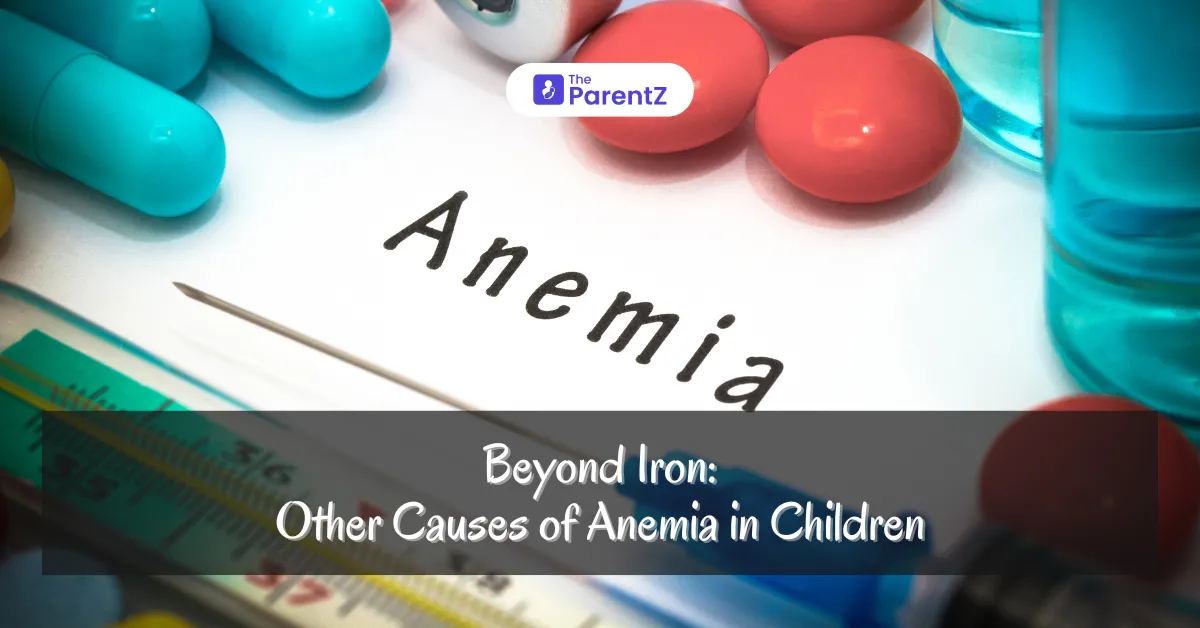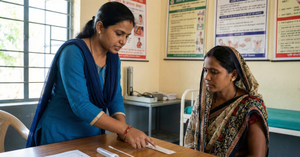What is Anemia?
Anemia is a condition characterized by a decrease in the number of red blood cells (RBCs) or a reduction in hemoglobin concentration, leading to inadequate oxygen transport throughout the body. In children, anemia can cause fatigue, weakness, pale skin, delayed growth, and impaired cognitive development. While iron deficiency is the most common cause, anemia can also result from deficiencies in other essential nutrients, chronic diseases, genetic disorders, and infections.
Macronutrient and Micronutrient Requirements for Healthy Red Blood Cell Production
To understand anemia beyond iron deficiency, it is essential to recognize the nutrients involved in red blood cell production:
1. Macronutrients
Macronutrients are required in larger quantities for overall growth and energy production.
• Proteins: Essential for the synthesis of hemoglobin and RBCs.
• Sources: Legumes, dairy, eggs, lean meats, fish, soy products.
• Fats: Help in the absorption of fat-soluble vitamins necessary for RBC formation.
• Sources: Nuts, seeds, avocados, olive oil.
• Carbohydrates: Provide the energy needed for RBC production and metabolism.
• Sources: Whole grains, fruits, vegetables.
2. Micronutrients
Micronutrients play a crucial role in hemoglobin production and erythropoiesis (RBC formation).
A. Vitamin Deficiencies Leading to Anemia
1. Vitamin B12 Deficiency (Megaloblastic Anemia)
• Role: Essential for DNA synthesis and RBC production. Deficiency leads to large, immature, and dysfunctional RBCs.
• Causes: Poor dietary intake, malabsorption (e.g., pernicious anemia, celiac disease), and certain medications.
• Symptoms: Fatigue, pallor, neurological issues like tingling sensations, developmental delays.
• Sources: Dairy products, eggs, meat, fish, fortified cereals.
2. Folate (Vitamin B9) Deficiency
• Role: Crucial for DNA replication and RBC formation. Deficiency results in megaloblastic anemia.
• Causes: Poor diet, malabsorption (e.g., celiac disease), increased demand (e.g., rapid growth phases, pregnancy), and medications like methotrexate.
• Symptoms: Fatigue, pallor, irritability, slow growth.
• Sources: Leafy greens, citrus fruits, beans, fortified grains.
3. Vitamin C Deficiency (Scurvy-Related Anemia)
• Role: Enhances iron absorption and supports collagen synthesis in blood vessels.
• Causes: Poor dietary intake of fresh fruits and vegetables.
• Symptoms: Bleeding gums, bruising, anemia due to poor iron absorption.
• Sources: Citrus fruits, strawberries, tomatoes, bell peppers.
4. Vitamin A Deficiency
• Role: Helps in RBC development and iron metabolism. Deficiency leads to reduced RBC production and impaired iron mobilization.
• Causes: Malnutrition, fat malabsorption disorders.
• Symptoms: Fatigue, weakened immunity, vision problems.
• Sources: Carrots, spinach, sweet potatoes, dairy products.
B. Mineral Deficiencies Beyond Iron
1. Copper Deficiency
• Role: Involved in iron metabolism and RBC production.
• Causes: Malabsorption disorders, excessive zinc intake, genetic conditions like Menkes disease.
• Symptoms: Anemia, neutropenia, impaired growth.
• Sources: Nuts, seeds, whole grains, shellfish.
2. Zinc Deficiency
• Role: Supports erythropoiesis and immune function.
• Causes: Poor diet, chronic diarrhea, malabsorption.
• Symptoms: Growth retardation, anemia, immune dysfunction.
• Sources: Legumes, nuts, dairy, whole grains.
Other Causes of Anemia in Children
1. Chronic Diseases and Infections
Certain chronic illnesses affect RBC production or increase destruction.
• Chronic Kidney Disease (CKD): Reduced erythropoietin production leads to anemia.
• Chronic Inflammatory Diseases (Juvenile Arthritis, Crohn’s Disease): Inflammatory cytokines suppress RBC formation.
• Infections (Malaria, Tuberculosis, HIV/AIDS): Parasitic and bacterial infections destroy RBCs and impair production.
2. Genetic Disorders
• Sickle Cell Anemia: A genetic mutation causes abnormal hemoglobin, leading to fragile, sickle-shaped RBCs that break down easily.
• Thalassemia: A genetic defect in hemoglobin synthesis leads to chronic anemia requiring blood transfusions.
• G6PD Deficiency: A hereditary enzyme deficiency causes RBC destruction when exposed to certain drugs, foods, or infections.
3. Bone Marrow Disorders
• Aplastic Anemia: Bone marrow fails to produce sufficient RBCs, often due to infections, toxins, or autoimmune conditions.
• Leukemia: Cancer affecting bone marrow reduces RBC production.
4. Hemolytic Anemia
• Immune-Mediated Hemolysis: Autoimmune conditions destroy RBCs prematurely.
• Enzyme Deficiencies: G6PD deficiency and pyruvate kinase deficiency lead to RBC breakdown.
Prevention and Management Strategies
1. Balanced Diet
• Ensure an adequate intake of macronutrients and micronutrients through a well-balanced diet.
• Focus on whole foods, fortified cereals, and diverse plant and animal sources.
2. Regular Medical Check-Ups
• Early screening for anemia in high-risk children (e.g., preterm babies, those with chronic illnesses).
3. Supplementation When Necessary
• Vitamin and mineral supplements for children at risk of deficiencies.
• Folic acid supplementation for pregnant mothers to prevent neural tube defects and anemia in infants.
4. Disease Management
• Proper treatment for chronic conditions, infections, and genetic disorders.
• Blood transfusions for severe anemia due to conditions like thalassemia and sickle cell disease.
Conclusion
While iron deficiency is a leading cause of anemia in children, it is essential to recognize the other factors contributing to this condition. Vitamin deficiencies, mineral imbalances, chronic diseases, genetic disorders, and infections can all lead to anemia. A well-rounded diet, regular health check-ups, and early intervention are crucial for preventing and managing anemia beyond iron deficiency. By understanding these causes, parents and healthcare providers can ensure better health and development for children.








Be the first one to comment on this story.